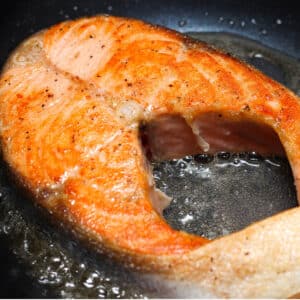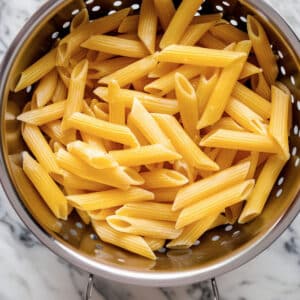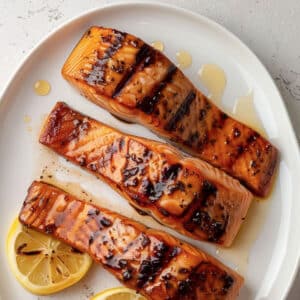You may have noticed that bacon can, at times, get salty. The excess salt affects the taste and is also not good for the long run. If you have ever wondered why bacon is salty, you can find your answer here.
Find out more about the numerous bacon varieties available, how bacon is cured, and how it gets salty. You also learn what you can or how to make bacon less salty.
Bacon is not only smoky but also has lots of salt or sodium. Often, this salty flavor gets overpowering, even if you cure it yourself, especially if you want to reduce your sodium intake.
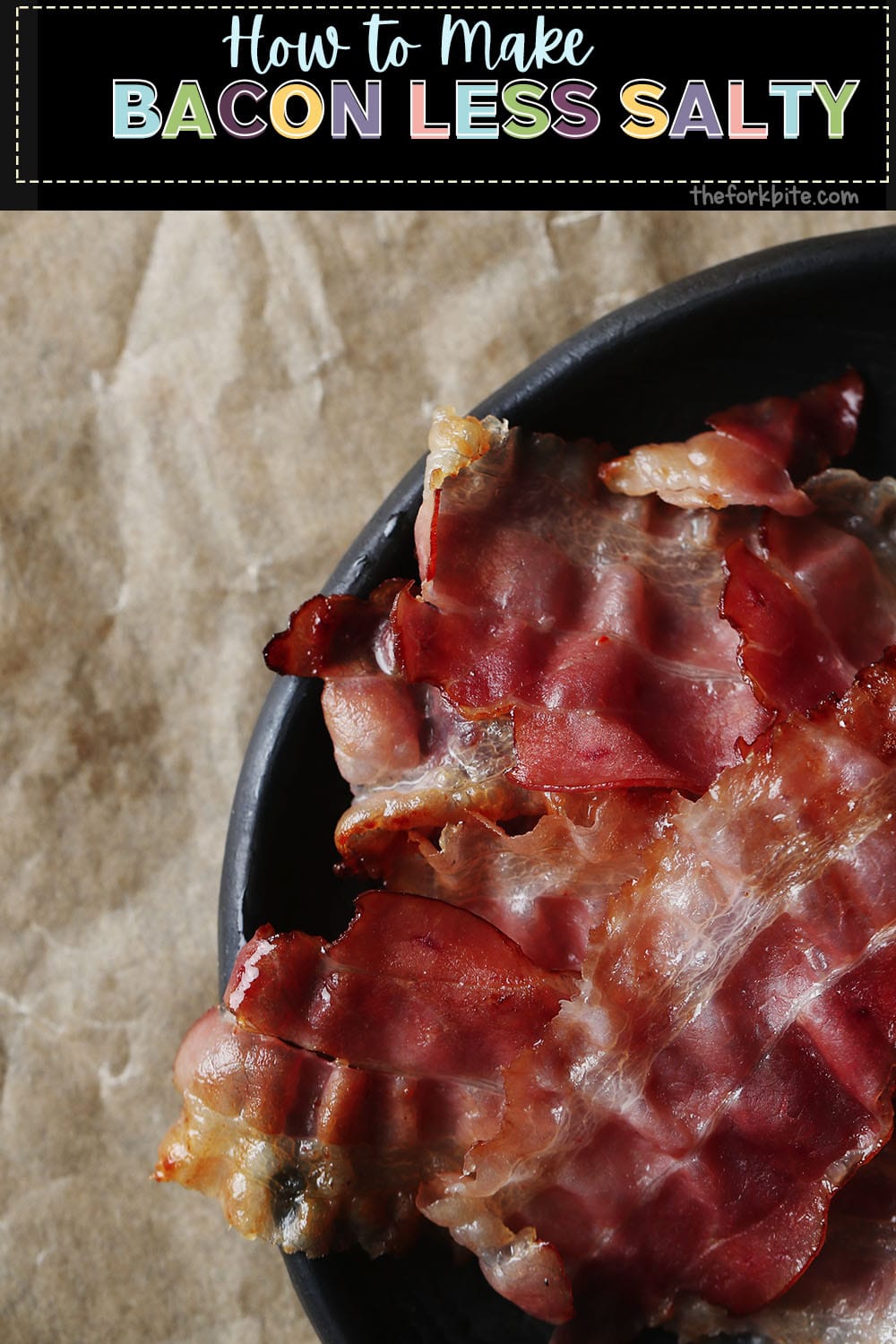
You may wonder why bacon is salty in the first place. And if it's possible to reduce the salt somehow. Read on for your answer.
Everything you wanted to ask about bacon, but let's start with the basics.
What is bacon?
Bacon is a type of salt-cured pork made from various cuts. While bacon is made by salt-curing any meat like beef, duck, or pork, pork belly is the most common choice as it contains lots of fat.
It can be made from any pork cut, considering there are different types of bacon in the market.
The most common cuts are the loin and side cuts, where you can change the method of curing bacon while adding various flavorings.
Recipe: Serve Bacon and Eggs in Toast Cups
That's why two kinds of bacon are not alike. And if you haven't tasted all of them yet, it's time to start as you'll never know when you'll find a new favorite.
Besides, not many know that bacon offers health benefits, giving you another good reason to eat it!
Related articles:
- The Best Way to Defrost Bacon in the Microwave
- How to Quickly Thaw Bacon
- How to Keep Bacon Warm
- Does Bacon Grease Go Bad?
Different types of Bacon
There are various bacon types, differing in its taste, cooking methods, and texture like:
1 Streaky or American bacon
Streaky or side bacon is the bacon you find in most stores. It's called streaky bacon because it has long fat layers running parallel to the rind. It is from the animal's fattier belly and comprises of 1:3 parts meat to fat.
It's usually cured by injecting a mixture of sodium and salt. Some variants undergo dry curing using a dry rub, while others are cured using wet curing. The bacon is smoked and cut into these slices if necessary after curing.
The high-fat levels in streaky bacon are why it reaches the perfect level of crispiness to use in sandwiches. It's also ideal for adding to most dishes that require a blend of strong taste and firm texture. You can even smoke bacon at home.
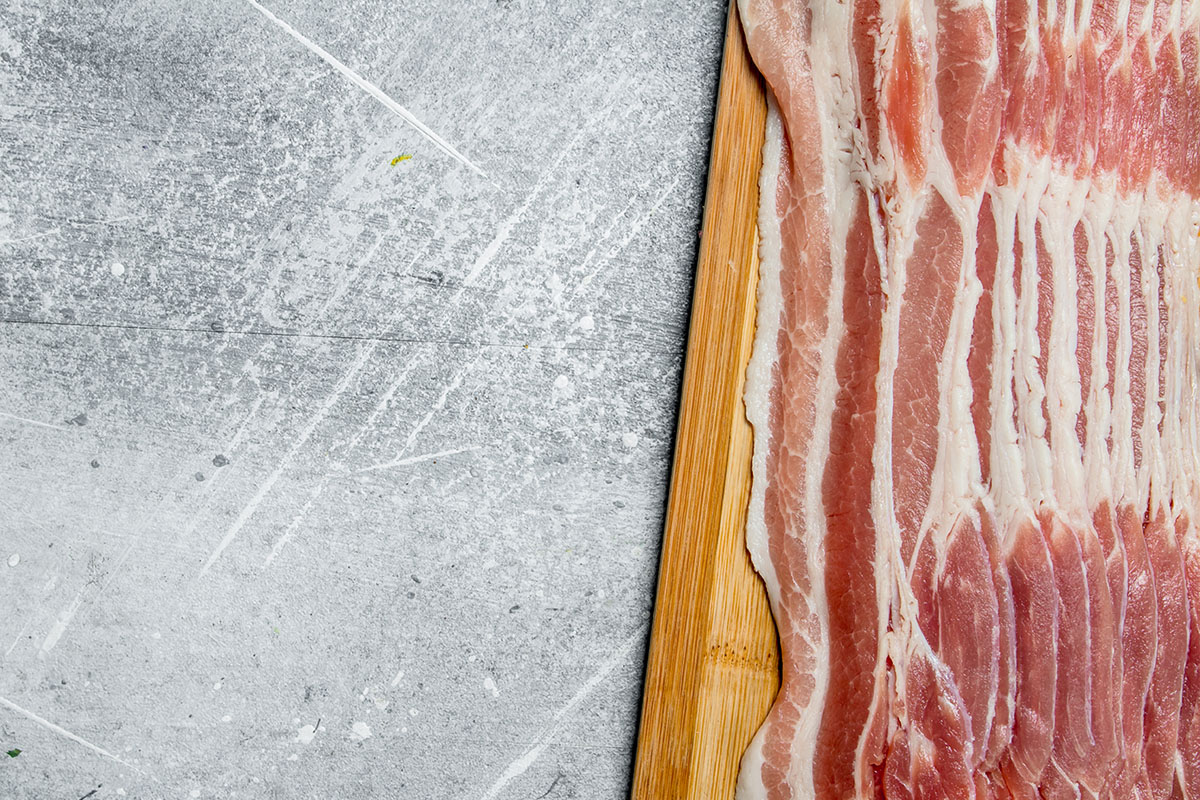
2 Back bacon
Back bacon contains more meat than fat as it's from leaner pork loin cuts and is pretty common in the UK and Canada. You have to cure your classic pork cuts, like making streaky bacon and cutting them into thin slices.
Back bacon is slightly thicker and chewier than the streaky variant and available in unsmoked and smoked versions. So if you want meatier bacon, try back bacon from the stall or make them at your home.
3 Collar bacon
Collar bacon is from the pork shoulder cut, with a dark color and more robust flavor. While it was once a staple for most families, it's not readily available nowadays.
Though leaner than belly meat, shoulder meat has some taste and moisture marbling. Its full flavor and firm texture make collar bacon perfect to use in sandwiches and pasta dishes.
Don't worry if you want some collar bacon cut, but there's nothing nearby. You can try placing an order online or making your own bacon from a full collar at home.
4 Jowl bacon
Jowls are preserved and smoked from the less commonly used pork's cheeks.
In Italy, it is called as Guanciale [ɡwanˈtʃaːle]. The term is derived from guancia, the Italian word for "cheek". They are great for bacon with their rich flavor and are popular as soul food.
The fat in jowl bacon gives the right texture and flavor and is perfect for breakfast or sandwiches.
Though best served together with leafy green vegetables, chopped jowls are best used as a garnish or in pork liver sausages for binding purposes.
5 Lardons
Lardons are the tiny fatty bacon strips used commonly in dishes like cog au vin and quiche Lorraine. You can also use it in any dish that complements its salt taste and texture.
Lardons are pretty versatile and complement almost anything. You can add them to salads, omelets, pasta dishes, potato dishes, or grilled vegetables.
If you don't find any lardons locally, you can buy some slab bacon and cut them into ¼ inch chunks.
6 Pancetta
Smoked bacon is the type that we are familiar with. However, pancetta is marinated in salt and dried. This Italian version of cured pork belly can be eaten raw, cooked, finely sliced, or used as a wrapping for meat or vegetables and eaten.
Cooked cubed pancettas also go well in dishes that complement the depth and taste of its salty and meaty flavor, like in soups, sauces, and pasta dishes.
7 Speck
The origin of Speck bacon came from Europe, specifically Switzerland, Northern Italy, and Austria. As it's thin slices of cured pork, speck does resemble the classic bacon.
However, there are also many differences.
Speck contains more muscle because it was made from the leg and not the belly like most bacon, so it is available as long narrow slices.
Cured, smoked, and dried in the air, speck is cut into fine, thin slices and eaten raw in a sandwich, salads, an antipasti platter, or wrapped around fruits.
Its intense flavor, firm texture, dark color, and a good ratio between meat and fat make speck different from other bacon variants like pancetta.
8 Smoked and flavored bacon
You can use different wood chips to smoke bacon and add flavor. While most stores have various smoked bacon types, you can always alternatively smoke your bacon.
While hickory is famous for having a sweet and robust smoky flavor, maple gives a mild and sweet taste.
Alternatively, you can always add some seasoning to the meat during its curing process for extra flavor without overriding the bacon taste.
9 Non-pork bacon
You can try bacon from other animals if you want some variety or don't eat pork. While beef bacon looks similar, it tastes more like steak, making it perfect to use in sandwiches.
Alternatives to pork bacon:
- Turkey bacon is a rasher from reconstituted turkey meat.
- Duck bacon - Finely sliced strips from the breast of duck containing lots of fat
- Salmon bacon goes well in sandwiches or bagels but differs from standard bacon slices.
- Dulse seaweed tastes a lot like bacon. While it's not a traditional bacon, it has a good protein and nutritional source.
Additional factors to consider in bacon
You don't have just to consider the type of bacon. You also have to decide how thick you want your bacon and if you prefer it cured or dry-cured.
1 Cured or dry-cured bacon
While this is a matter of personal choice, you can sort it out if you understand the term better. So, which one would you choose?
Curing is a meat preservation process done in two ways, wet or dry curing.
The two types look pretty similar but have different textures and flavors.
- Wet curing is brined bacon marinated in salt, water, and seasonings. This preserves the meat while adding some taste and retaining moisture.
- Dry curing is known for its intense flavors. It is marinated with only seasoned ingredients and then absorbed in its flavor and juices without adding any water.
Dry-cured bacon is a better choice if you prefer strong, flavored that crisps up nicely.
However, if you are looking for moist, juicy bacon with a mild flavor, wet cured bacon falls on that category.
2 Thickness
While bacon slices usually measure 1/16th of an inch, you can find some that are twice as thick.
It may be better to buy pre-cut lardons or a slab of bacon you can cut to your desired thickens to use in a slow-cooked dish.
Why is bacon salty?
Bacon is usually salty after prolonged exposure to the curing salt. While I typically cure bacon for 3 to 10 days, I restrict the curing process to only five days if I want a less pronounced salt flavor.
Another reason for salty bacon is you, or the manufacturer uses too much salt while curing.
Generally, 1-2 teaspoons of curing salt are more than enough for curing 5 pounds of pork belly. And as you usually add kosher or table salt to the moisture, make sure you be careful with your salt!
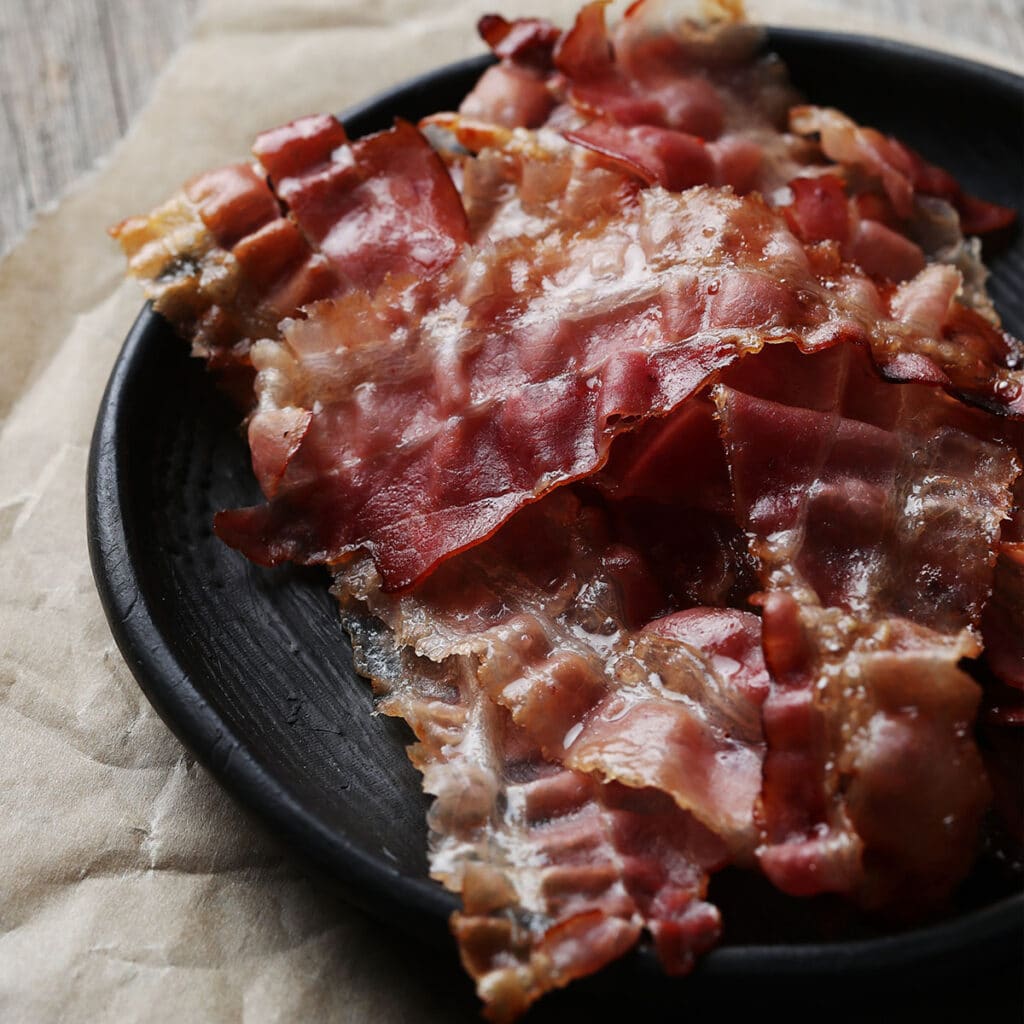
The curing ingredients
The best way to mitigate the saltiness of the bacon is to add a few tablespoons of brown sugar to the curing recipe.
But you must understand that dry-cured bacon is usually saltier than wet-cured bacon. So, try using a wet brine recipe to see the difference when you next make homemade bacon.
But if you make your bacon, use curing salt #1 and never salt #2. Pink salt, also known as curing salt No. 1, is a combination of sodium chloride — table salt — and nitrite, a preserving agent used to deter the growth of bacteria in cured meats.
It's because curing salt #2 is popular in pepperoni, salami, and meats that have to be booked before eating. #2 is, however, used for smoked meats.
Read: How to Use Pink Salt for Curing Meat
Two forms of pink salt
There are two forms when it comes to pink salt:
- Cure #1 is a form of pink salt with 93.75% table salt and 6.25% sodium nitrite that acts as a preserving agent used to deter the growth of bacteria in cured meats—commonly used for brining, smoking, or canning.
- Cure #2 is another form of pink salt used for dry-cured products such as pepperoni, hard salami, prosciutti hams, dried sausages, and other products which do not require cooking, smoking, or refrigeration.
Why is salt used for curing?
Salt draws out moisture to reduce the chances of bacteria and mold spores multiplying in the moist meat surface environment.
Salt and dehydrated beef jerky last longer than raw beef because there isn't much space for bacteria to multiply after drawing out the moisture.
How to make bacon less salty
There are various options to fix salty bacon based on where it is cooked or raw and how you intend to use it.
Here are a few techniques I always use:
For Raw bacon
Suppose you find the bacon too salty after cooking a few strips of raw bacon. You may wonder what you can do to salvage at least the raw bacon.
Well, the good news is that you can easily do it.
Step 1
- Place raw bacon in a bowl, let it immerse entirely in water
- Then put it in the fridge for at least 2 hours. Ensure that you soak the bacon in a container that fits inside the refrigerator.
Step 2
- After two hours, you can test the bacon by cooking a small piece. If it tastes too salty, you should repeat the process by draining the container with water and filling it with a fresh one.
- Let the bacon sit in the refrigerator for another 2 hours.
Repeat the entire process as frequently as possible till you get your desired flavor. This process is reverse-brining, which helps reduce the meat's saltiness.
However, you have to be careful while reverse-brining because you may lose some of the smoky taste.
There's a quicker option you can also try out.
- Try boiling some water in a frying pan, add the bacon and let it simmer for about a minute.
- Then drain the pan, pat dry the bacon strips with paper towels, and cook as usual.
For Cooked bacon
You, however, have limited options if you have a large batch of cooked bacon that's too salty for taste. Reverse-brining and blanching won't work well because it's already cooked bacon.
Option 1
But in the case of dishes using crumbled or chopped bacon like twice-baked potatoes, you can try reducing the amount of bacon you use. You may not be able to do this if bacon is the star ingredient. But there's no harm in trying!
Option 2
Potatoes are high in potassium and perfect to counteract the increased sodium effects.
So if you are worried about the high salt for health reasons, you could add the bacon to a potato dish and offset the risk.
Option 3
As cream and butter help balance out salty flavors, you can add one or both of them if it complements your recipe. Make sure you use unsalted butter. If not, you will only end up aggravating the problem.
Option 4
Add something acidic. If the bacon is a side dish and too salty, you can add something acidic to it. As acid and salt are strong tastes, a high concentration offsets the other well.
For example, you could pair the bacon with an acidic sauce or something bland, balancing the salt. Regular tomato soup with minimal or no salt should work well.
How to tell if the bacon will be too salty
The best way to ensure your bacon is not too salty is by curing it on your own with the help of the abovementioned tips. However, there are also a few tricks you can keep up your sleeve if you don't have the patience or time to try them.
1 Read the label
It's impossible to tell how salty the bacon you buy at the supermarket just by looking at it. So the first thing you need to do is check its label for its sodium content.
You can thus compare a few brands to identify the lowest sodium bacon and fit your budget well.
Remember that a typical serving size of 3 bacon strips usually contains 400-500 mg of sodium. So if you want to reduce your salt intake, look for something on the lower side.
2 Try some alternatives
The good news is that you have a few alternatives if you like bacon taste and want to reduce your dish's sodium content. It's because bacon isn't the only cured pork product available.
There are other less salty alternatives with similar flavors like:
- Coppa bacon or shoulder bacon is rich, dry-cured meat labeled as capicola or capocollo.
- Pancetta that's salt-cured and not smoked has lower sodium levels than bacon and a cleaner flavor.
- Prosciutto or in Italy, it simply translates to "ham" that's aged for more than a year, with a rich and buttery texture, and can be eaten raw or cooked.
Precaution:
Be careful about using turkey bacon as a pork bacon alternative. It may be leaner and have slightly fewer calories but contains more sodium.
Besides, as it's not high in protein, turkey bacon doesn't make a healthy choice.

